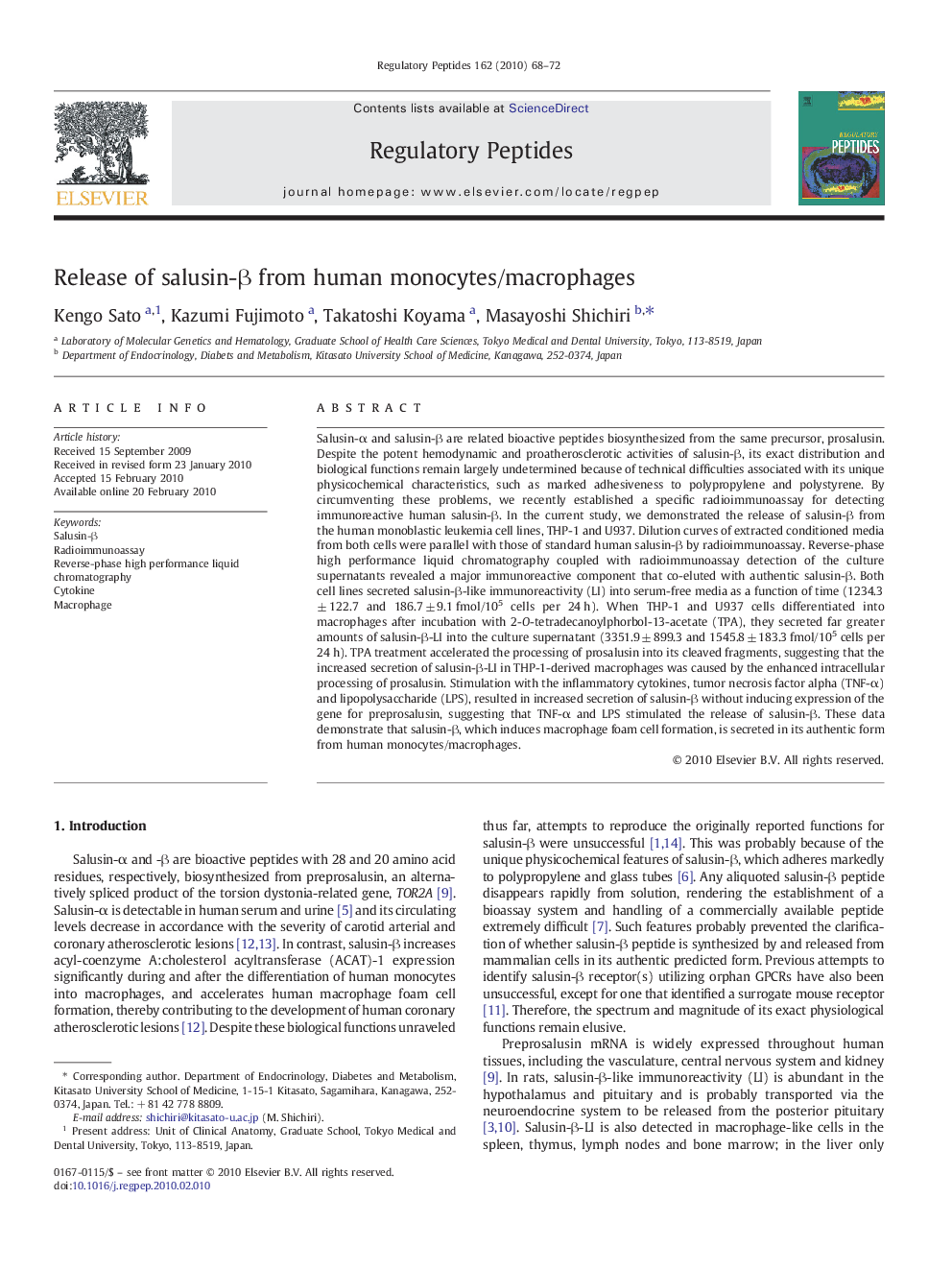| Article ID | Journal | Published Year | Pages | File Type |
|---|---|---|---|---|
| 2022857 | Regulatory Peptides | 2010 | 5 Pages |
Abstract
Salusin-α and salusin-β are related bioactive peptides biosynthesized from the same precursor, prosalusin. Despite the potent hemodynamic and proatherosclerotic activities of salusin-β, its exact distribution and biological functions remain largely undetermined because of technical difficulties associated with its unique physicochemical characteristics, such as marked adhesiveness to polypropylene and polystyrene. By circumventing these problems, we recently established a specific radioimmunoassay for detecting immunoreactive human salusin-β. In the current study, we demonstrated the release of salusin-β from the human monoblastic leukemia cell lines, THP-1 and U937. Dilution curves of extracted conditioned media from both cells were parallel with those of standard human salusin-β by radioimmunoassay. Reverse-phase high performance liquid chromatography coupled with radioimmunoassay detection of the culture supernatants revealed a major immunoreactive component that co-eluted with authentic salusin-β. Both cell lines secreted salusin-β-like immunoreactivity (LI) into serum-free media as a function of time (1234.3 ± 122.7 and 186.7 ± 9.1 fmol/105 cells per 24 h). When THP-1 and U937 cells differentiated into macrophages after incubation with 2-O-tetradecanoylphorbol-13-acetate (TPA), they secreted far greater amounts of salusin-β-LI into the culture supernatant (3351.9 ± 899.3 and 1545.8 ± 183.3 fmol/105 cells per 24 h). TPA treatment accelerated the processing of prosalusin into its cleaved fragments, suggesting that the increased secretion of salusin-β-LI in THP-1-derived macrophages was caused by the enhanced intracellular processing of prosalusin. Stimulation with the inflammatory cytokines, tumor necrosis factor alpha (TNF-α) and lipopolysaccharide (LPS), resulted in increased secretion of salusin-β without inducing expression of the gene for preprosalusin, suggesting that TNF-α and LPS stimulated the release of salusin-β. These data demonstrate that salusin-β, which induces macrophage foam cell formation, is secreted in its authentic form from human monocytes/macrophages.
Keywords
Related Topics
Life Sciences
Biochemistry, Genetics and Molecular Biology
Biochemistry
Authors
Kengo Sato, Kazumi Fujimoto, Takatoshi Koyama, Masayoshi Shichiri,
